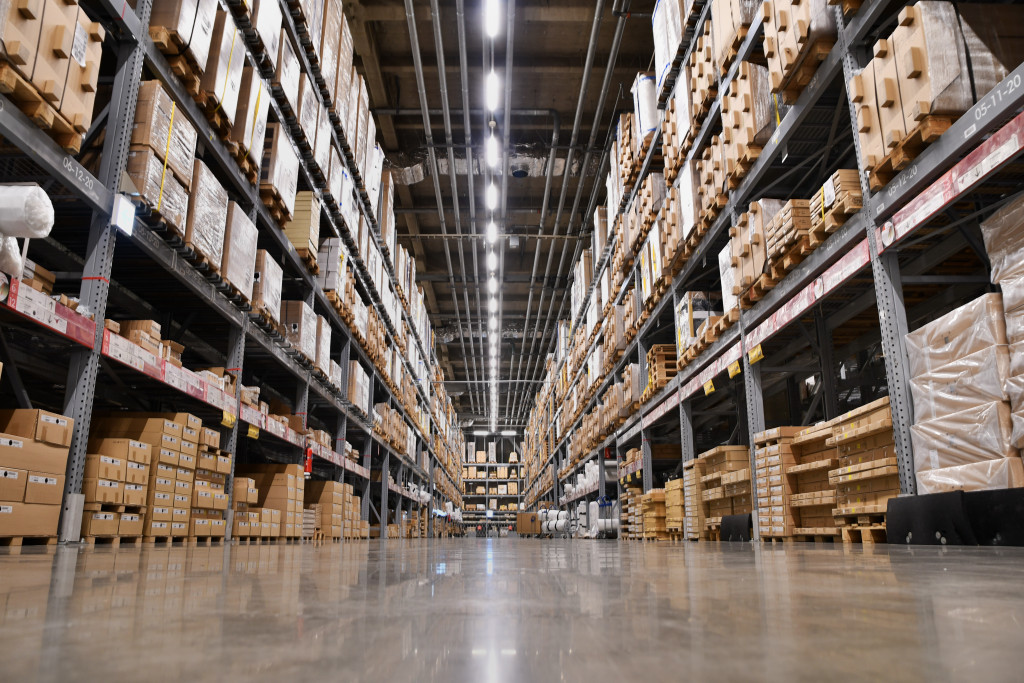- Embrace alternative fuels such as electricity, biofuels, hydrogen, and natural gas to reduce CO2 emissions.
- Practice safe driving to reduce the risk of accidents and minimize their environmental impact.
- Improve the efficiency of shipping routes and methods to decrease carbon emissions.
- Implement sustainable practices in warehousing, packaging, and inventory management.
- Partner with sustainable suppliers and carriers who are also working toward sustainability.
The logistics industry plays a significant role in the world’s economy, enabling manufacturers, wholesalers, retailers, and consumers to transport goods and merchandise efficiently. However, given the environmental impact of logistics activities, businesses in the industry must take significant steps to ensure sustainability and minimize their carbon footprint.
This blog post will share some of the best tips for sustainability when running a logistics business. By following these tips, companies can reduce their environmental impact, enhance their brand reputation, and contribute to a better and more sustainable future for our planet.
1. Embrace Alternative Fuels
One of the crucial steps that logistics businesses should take to promote sustainability is to transition to alternative fuels. Regular gasoline and diesel are expensive and damaging to the environment. They contribute to global warming and air pollution. Switching to renewable energy sources can significantly reduce the impact of your business on the environment. This includes the following options:
a. Electricity
If you own a fleet of trucks, switch to electric variants. This will reduce your reliance on conventional fuels and lower CO2 emissions. Many countries are offering incentives to businesses that switch to electric vehicles.

b. Biofuels
Biofuels are renewable sources of energy derived from plant-based materials. They are a more sustainable and cost-effective option than traditional fuels, reducing emissions and other negative environmental impacts.
c. Hydrogen
Hydrogen-powered fuel cells are also becoming increasingly popular in the logistics industry. They have zero emissions and can be used to power smaller vehicles.
d. Natural gas
Natural gas is a more environmentally friendly alternative to diesel and gasoline. It burns cleaner, produces fewer emissions, and is cost-effective in the long run. But, it would be best if you made sure that the natural gas is sourced sustainably.
2. Practice Safe Driving
Thousands of people are killed in road accidents every year. This is a major concern for the logistics industry, as it can lead to severe financial and reputational damage. Road accidents also contribute to air pollution and wasted fuel, which puts added strain on the environment. To reduce this risk, businesses should ensure that their drivers practice safe driving and adhere to all safety rules and regulations.
A good way to ensure safe driving is to invest in comprehensive driver training programs. These should include defensive driving techniques, as well as tips on how to drive efficiently and responsibly. For one, they can take a driver improvement course to help them stay focused and alert on the road. This can help reduce the risk of accidents and minimize the environmental impact of their activities.
3. Optimize Routes and Shipping Methods
Another critical step toward sustainability is optimizing your shipping processes to reduce emissions. Use advanced logistics software to plan and optimize your delivery routes, minimizing the distance covered and fuel consumed directly. Additionally, consider shipping by rail or water, which are lower-carbon alternatives than truck transportation.
When possible, consolidate your shipments to increase efficiency and reduce the number of trips your trucks make. This can help reduce your carbon footprint and save you time and money. You can also explore alternative shipping methods, such as air cargo and sea freight.

4. Implement Sustainable Practices in Warehousing and Packaging
Sustainability in logistics goes beyond transportation. It also involves implementing sustainable practices in warehousing, inventory management, and packaging. Select eco-friendly, recyclable, or biodegradable packaging materials, such as cardboard boxes, paper, or compostable plastics. Reduce packaging waste by optimizing package sizes and implementing returnable or reusable packaging.
Additionally, invest in energy-efficient lighting systems, heating, and cooling systems. These actions can reduce your energy consumption and costs, promote sustainability, and foster a positive brand reputation. You can also invest in automated systems to reduce manual labor and optimize processes.
5. Partner with Sustainable Suppliers and Carriers
Finally, as a logistics business, your sustainability efforts should extend beyond your operations to include the actions of your supply chain partners. Partner with suppliers who prioritize sustainability and use environmentally-friendly practices. Work with carriers and logistics providers with sustainable practices and goals. Consider their carbon footprint, transportation methods, and fuel usage as part of your selection process.
Sustainability is essential in running a logistics business, and implementing sustainable practices can provide significant benefits such as cost savings, increased efficiency, and a positive brand reputation. Consider these tips and align your sustainability goals with your business objectives. Sustainability must be embedded in your company culture and communicated to your customers, suppliers, and employees. With the right strategies, logistics businesses can reduce their environmental impact and contribute to a sustainable future.
